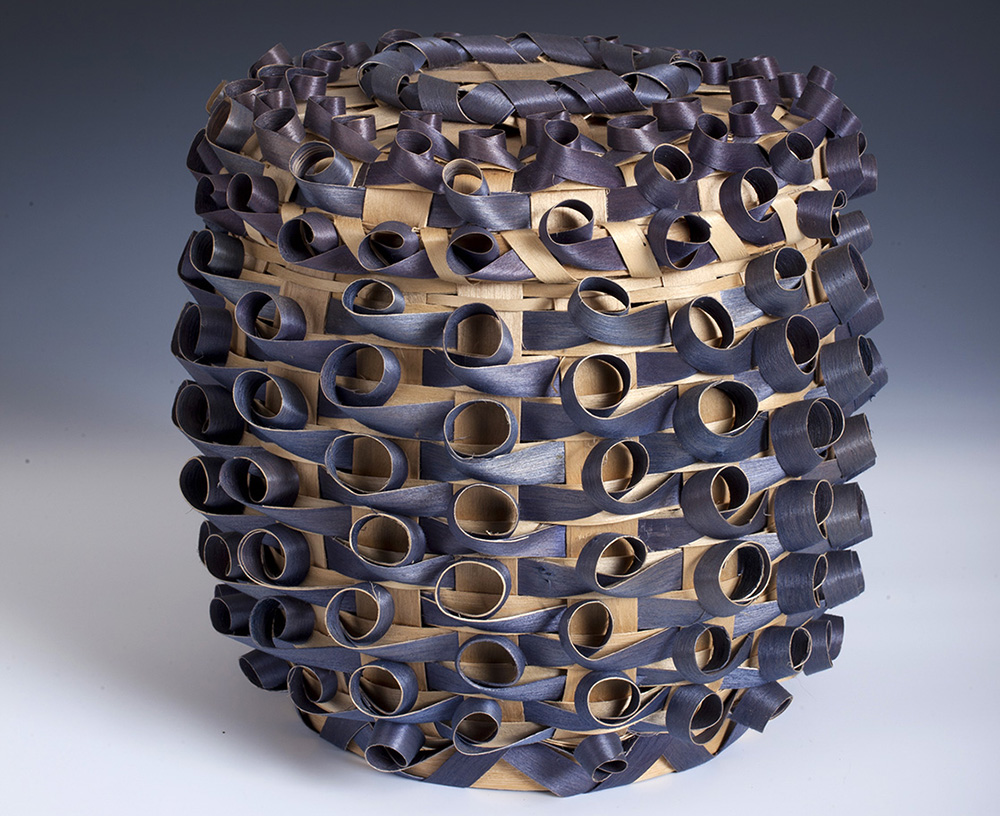
- Details
- By Museum of Wisconsin Art (MOWA)
Weaving a Legacy:Ho-Chunk Black Ash Basketry is a monumental act of cultural identification and preservation.
(West Bend, WI) Museum of Wisconsin Art is thrilled to announce Weaving a Legacy: Ho-Chunk Black Ash Basketry, an exhibition which introduces audiences to the historically important and visually striking tradition of Native basketmaking in Wisconsin. Featuring 200 baskets by more than 40 Ho-Chunk makers from the mid-1800s to the present, this groundbreaking exhibition presents this subject for the first time. In addition to images of the baskets, the accompanying catalogue includes historical photographs. It will be the definitive book to date on the topic. The exhibition opens August 3, 2024.
Weaving a Legacy is curated by Ho-Chunk artist and University of Wisconsin–Madison Professor of Photography Tom Jones, who has collected Ho-Chunk baskets and pieced together tribal history for more than a decade. This exhibition celebrates Jones’s act of cultural preservation: photographing and documenting more than two thousand baskets from the mid-1800s through to contemporary work. Until now, no exhibition, book, or even brochure has ever been produced on this history.
“This project raises serious questions regarding historical and gender-based injustice, the cultural impact of tourism, and the importance of primary Indigenous-driven research to reset the art historical canon,” said Laurie Winters, James and Karen Hyde Executive Director. “Exhibitions such as this one that enable us to draw in new audiences and viewpoints fulfill an important tenet of MOWA’s institutional mission.”
Black ash basketry emerged in Wisconsin by the 1820s. It took inspiration from the Indigenous tradition of hand-woven twill and wool mats, rugs, and panel bags, as well as the later practice of ribbon-work appliqué, which incorporated European trade goods into Ho-Chunk designs. Works in the exhibition are organized by shape and function to reflect the specialization of the makers who often developed highly distinctive, recognizable weaving styles. “Contemporary works establish Ho-Chunk basketry as an enduring and still evolving art rooted in uniqueness and individual expression,” said curator Tom Jones. Helen Lonetree, Ruth Cloud, and Sarah White Eagle, whose works are collected by major American art museums, are prominently featured.
Join us as Weaving a Legacy gives voice to the region’s cultural heritage, commemorating the beauty and craftsmanship of Ho-Chunk basketry. The exhibition runs August 3–November 10, 2024.
Help us defend tribal sovereignty.
At Native News Online, our mission is rooted in telling the stories that strengthen sovereignty and uplift Indigenous voices — not just at year’s end, but every single day.
Because of your generosity last year, we were able to keep our reporters on the ground in tribal communities, at national gatherings and in the halls of Congress — covering the issues that matter most to Indian Country: sovereignty, culture, education, health and economic opportunity.
That support sustained us through a tough year in 2025. Now, as we look to the year ahead, we need your help right now to ensure warrior journalism remains strong — reporting that defends tribal sovereignty, amplifies Native truth, and holds power accountable.
 The stakes couldn't be higher. Your support keeps Native voices heard, Native stories told and Native sovereignty defended.
The stakes couldn't be higher. Your support keeps Native voices heard, Native stories told and Native sovereignty defended.
Stand with Warrior Journalism today.
Levi Rickert (Potawatomi), Editor & Publisher
